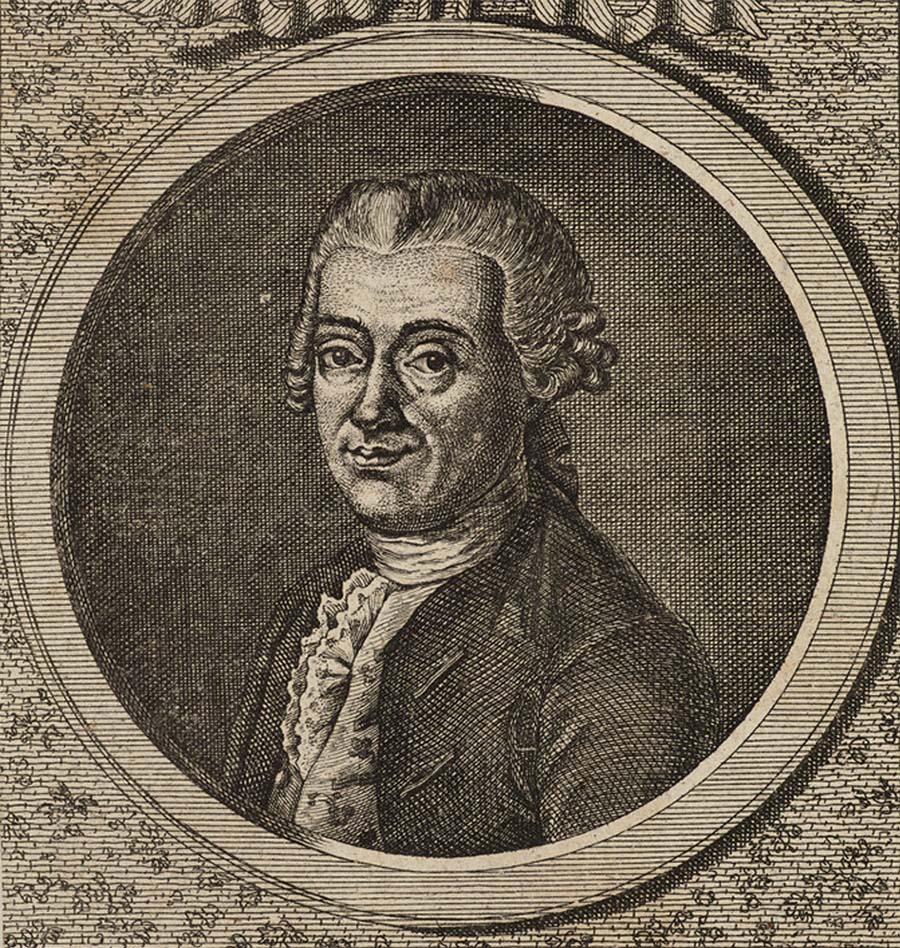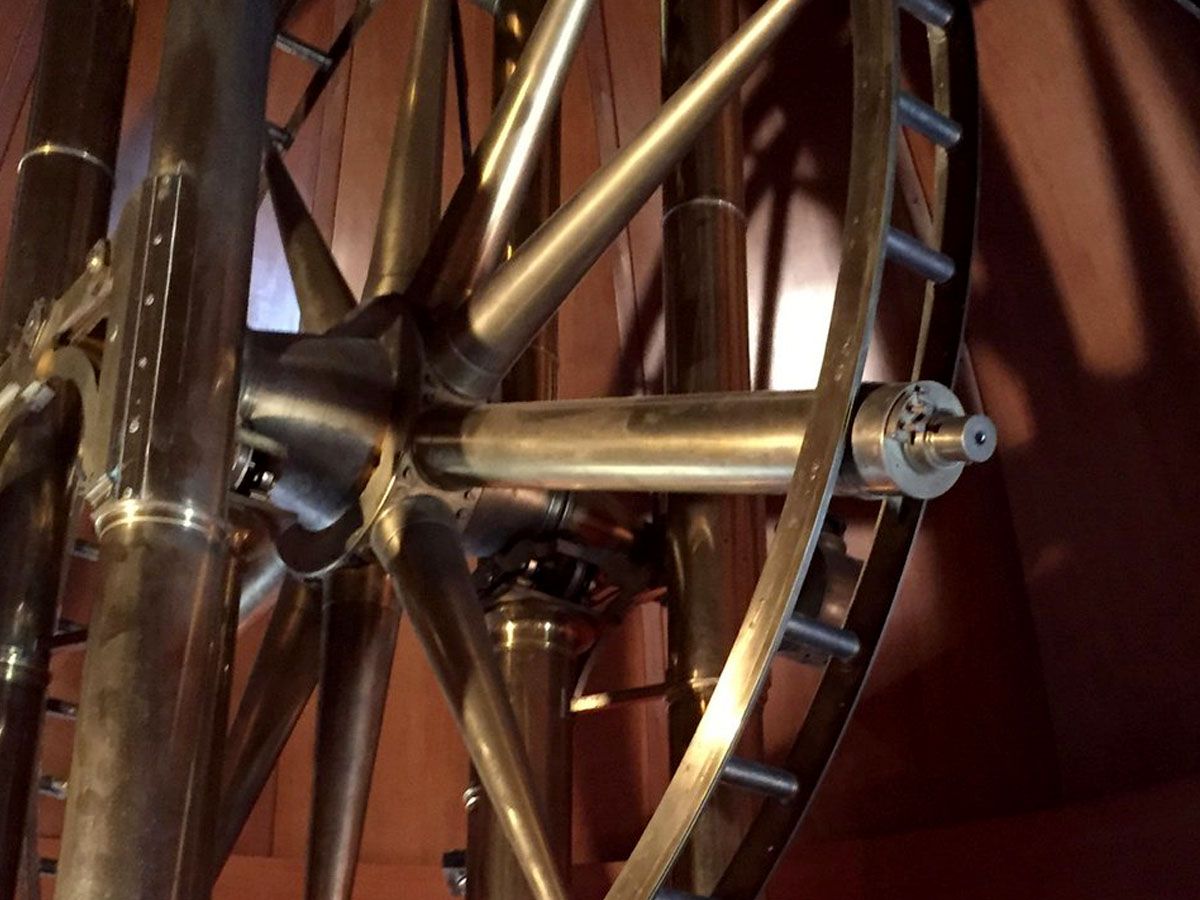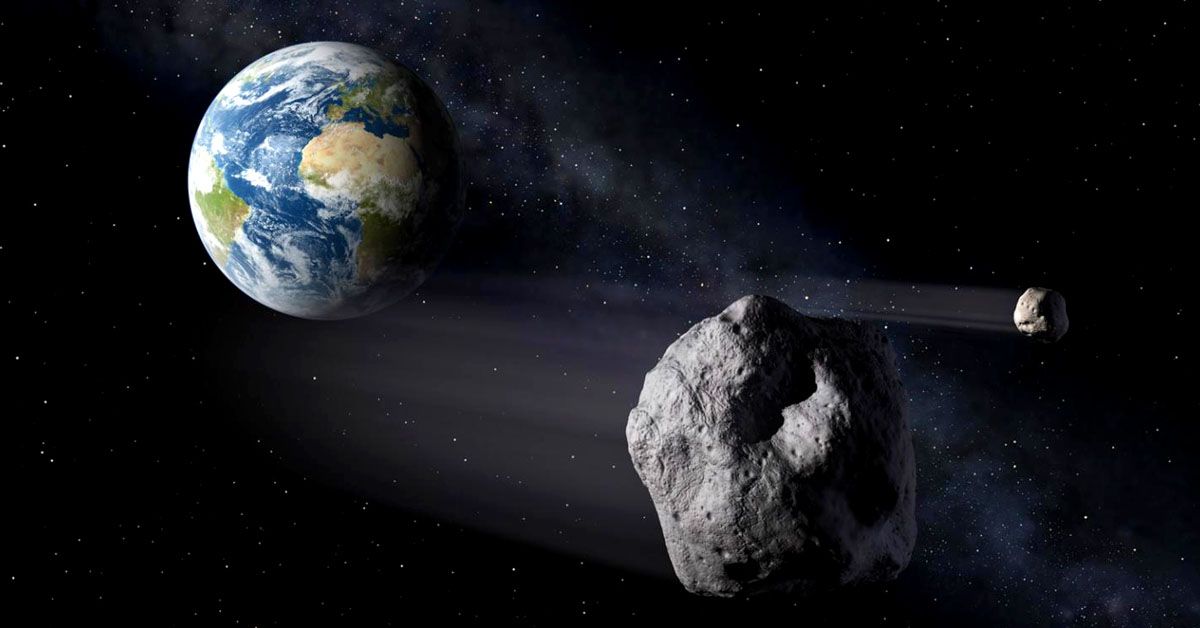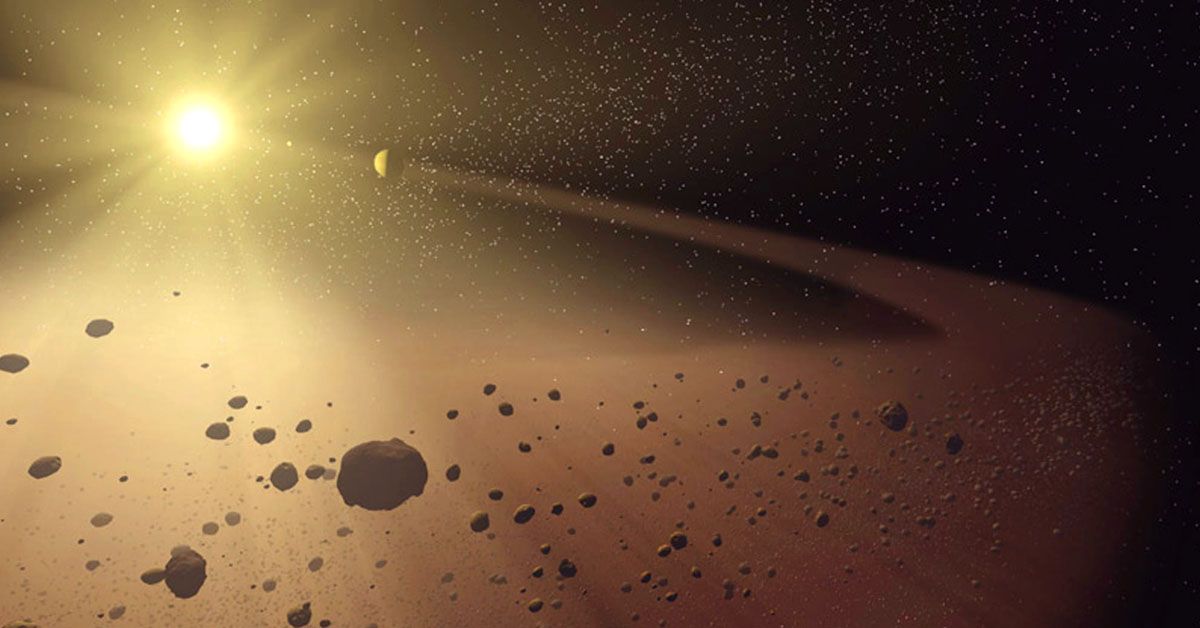The universe is an immense, mysterious space filled with celestial bodies - one such object being asteroids. Remains from early solar system formation known as minor planets or asteroids provide insight into our origins while playing an essential part in shaping the geological history of planet Earth and beyond. Found mostly within Mars-Jupiter Asteroid Belts, these rocky, irregularly-shaped objects provide significant information regarding our solar system's formation and evolution.
Location and Formation of the Main Asteroid Belt
Position between Mars and Jupiter
The main asteroid belt lies between Mars and Jupiter's orbits and serves as an expansive repository for thousands of asteroids from every corner of space. Extending for over two-and-a-half times Earth's distance from Sun, its asteroids orbit at more than twice Earth's distance, yet remain widely dispersed due to space's vastness, collision risk among them being relatively minimal.
Formation Theories
The main asteroid belt is believed to have formed from the bits and pieces of rock left over from the dawn of the solar system. Numerous theories have been proposed to explain the formation of the belt and the abundance of these rocky remnants, also known as planetoids or asteroids.
One such theory is the Grand Tack model, which suggests that during the initial five million years of solar system evolution, Jupiter and Saturn migrated inward toward the Sun before changing course and retreating back out again, dispersing an initial asteroid belt and replenishing it through material dispersed from them by their outward migration.

Jupiter's powerful gravitational force was also instrumental in creating the belt's formation; its gravity kept debris from forming larger planets; hence its total mass was less than Earth's Moon which cannot even be considered a planet!
Observations of other star systems have revealed signs of asteroid belts, suggesting that such formations might be a common occurrence in the cosmos. By studying these belts, scientists continue to gain a deeper understanding of the solar system and the processes that shaped it during its early stages.
Composition and Types of Asteroids
Rock and Stone Composition
Asteroids exhibit a wide variety of compositions, with most main belt asteroids being composed mostly of rock and stone. These ancient space rocks can provide valuable insights into our solar system's formation nearly 4.6 billion years ago; furthermore, their composition directly affects their appearance, size, shape, reflectivity, etc.
Metal and Ice Content
While most asteroids in the main belt are composed of rocks, there is a small population containing metallic elements like iron and nickel that provide researchers with an insight into the planetary core composition. Furthermore, distant asteroids often contain water ice deposits, offering clues into their distribution throughout our solar system.

Classification Based on Albedo and Chemical Composition
Asteroids are classified into several types based on their chemical composition and their reflectivity, or albedo. Common classifications include C-type, S-type, M-type, and others. C-type (chondrite) asteroids are the most prevalent, comprising roughly 75% of all known asteroids. These objects are made up of clay and silicate rocks and are typically dark in appearance. S-type (stony) asteroids account for about 17% of known asteroids and are composed of silicate materials and nickel-iron.
Finally, M-type (metallic) asteroids are primarily made of nickel-iron and are thought to have originated from the metallic cores of differentiated parent bodies. These compositional differences are intrinsically linked to the distance from the Sun at which these asteroids formed, with each type providing unique insights into the early solar system's composition and evolution.
Largest Asteroids and Ceres
Vesta, Pallas, and Hygiea
Among the millions of asteroids in the main belt, a few stand out due to their impressive size. Vesta, Pallas, and Hygiea are the largest asteroids, with diameters measuring hundreds of miles. These colossal bodies have distinct compositions and characteristics that set them apart from their smaller counterparts. Vesta, the largest of the three, has a diameter of approximately 329 miles (530 kilometers) and is characterized by its unique basaltic surface. Pallas, with a diameter of about 318 miles (512 kilometers), is the second-largest asteroid and has a slightly elongated shape. Hygiea, the fourth-largest object in the main belt, has a diameter of around 270 miles (434 kilometers) and is considered a candidate for reclassification as a dwarf planet due to its nearly spherical shape.

Ceres as a Dwarf Planet
Ceres is another noteworthy object within the main asteroid belt. With a diameter of about 590 miles (940 kilometers), it is not only the largest object in the belt but also the only one classified as a dwarf planet. Unlike most asteroids in the main belt, which are primarily composed of rocky materials, Ceres is an icy body containing water and other volatile compounds. This unique composition has led to the detection of organic materials on its surface, as observed by NASA's Dawn spacecraft.

Kirkwood Gaps and Orbital Resonances with Jupiter
Within the main asteroid belt, there exist relatively empty regions known as Kirkwood gaps. These gaps are the result of orbital resonances with Jupiter, the solar system's largest planet. An orbital resonance occurs when the orbital periods of two celestial bodies have a simple numerical ratio, causing the gravitational interactions between them to become synchronized. In the case of the Kirkwood gaps, the orbital periods of asteroids within these regions have a simple ratio with Jupiter's orbital period, leading to a destabilizing effect on their orbits.
As the asteroids in these resonant orbits interact with Jupiter's powerful gravitational pull over time, their orbits become increasingly elliptical and unstable. Eventually, these gravitational interactions cause the asteroids to be ejected from the resonance region, leaving behind the observed gaps in the main belt's distribution.

The discovery of Kirkwood gaps and their association with Jupiter's gravitational influence has provided valuable insights into the complex dynamics of the solar system. By studying these gaps and the mechanisms behind their formation, scientists can better understand the role of gravitational interactions in shaping the distribution and evolution of celestial bodies, both within our solar system and beyond.
Asteroid Characteristics and Classifications
Size, Shape, and Cratering
Asteroids come in a variety of sizes, ranging from small boulders to massive bodies spanning several hundred miles in diameter. The largest asteroid in the main belt, Vesta, measures about 329 miles (530 kilometers) across. In contrast, some asteroids are less than 33 feet (10 meters) in diameter. Most asteroids are irregularly shaped due to their relatively weak gravitational forces, which are not strong enough to pull them into a spherical form. The surfaces of these celestial bodies are often pitted or cratered as a result of numerous impacts with other objects throughout their long history.
C, S, and M-type Asteroids
As previously mentioned, asteroids are classified into several categories based on their chemical composition and albedo. The three broad composition classes of asteroids are C-, S-, and M-types.
C-type asteroids, also known as chondrite asteroids, are the most common variety and are primarily composed of clay and silicate rocks. These objects are dark in appearance and are thought to have formed farthest from the Sun.
S-type asteroids, or "stony" asteroids, make up approximately 17% of known asteroids and are composed of silicate materials and nickel-iron. These asteroids are generally brighter than C-type asteroids and are believed to have formed at intermediate distances from the Sun.
M-type asteroids, or metallic asteroids, are primarily made of nickel-iron and are thought to originate from the metallic cores of differentiated parent bodies. These asteroids are relatively rare and are associated with the formation of planets and other large celestial bodies.
By studying the characteristics and classifications of asteroids, researchers can gain valuable insights into the early solar system and the processes that have shaped its evolution over billions of years.
History of Asteroid Discovery
Johann Titius and the Prediction of the Asteroid Belt
The concept of an asteroid belt between Mars and Jupiter was first proposed by Johann Titius, an 18th-century German astronomer. Titius observed a pattern in the distribution of the known planets' distances from the Sun, which later became known as the Titius-Bode law. According to this law, there appeared to be a gap between Mars and Jupiter where another celestial body should have been located. This observation led Titius to predict the existence of a group of objects within this region, which would later be identified as the main asteroid belt.

Giuseppe Piazzi and the Discovery of Ceres
The first object within the predicted region was discovered on January 1, 1801, by Italian astronomer Giuseppe Piazzi. Initially believing it to be a comet, Piazzi's observations revealed that the object had a circular orbit, which was more characteristic of a planet. This newfound celestial body was named Ceres, after the Roman goddess of agriculture. Ceres was later classified as an asteroid and is now considered a dwarf planet, as mentioned earlier.
Following Piazzi's discovery, several other large asteroids were identified, including Pallas, Juno, and Vesta. As more objects were discovered in this region, it became clear that the main asteroid belt was a vast collection of numerous celestial bodies, confirming Titius' initial prediction. The discovery of these objects and their classification as asteroids marked a pivotal moment in the understanding of our solar system and laid the groundwork for the study of these fascinating remnants from the dawn of our cosmic neighborhood.

Naming Asteroids
The process of naming asteroids is overseen by the International Astronomical Union's (IAU) Committee on Small Body Nomenclature. This committee is responsible for approving and cataloging the names of newly discovered asteroids, ensuring that they adhere to certain guidelines. However, the rules for naming asteroids are relatively lenient compared to those for other celestial bodies, such as planets and moons.
When an asteroid is discovered, it is initially given a provisional designation, which consists of a combination of numbers and letters that indicate the year of discovery and the order in which it was found. Once the asteroid's orbit is well-determined, the discoverer has the opportunity to propose a name for the object. The IAU encourages names that are simple, easy to pronounce, and preferably no more than 16 characters in length.

Asteroids can be named after people, places, or other things, as long as they do not conflict with existing names or violate the IAU's guidelines. For example, asteroids have been named after famous scientists, mythological figures, and even fictional characters. Once a name is approved, the asteroid is assigned a permanent number, which is used in conjunction with its name for identification purposes.
This flexible naming system has resulted in a diverse and interesting collection of asteroid names, reflecting the creativity and cultural influences of the astronomers who discovered them. The tradition of naming asteroids adds a personal touch to the scientific study of these fascinating objects, while also serving as a testament to the human spirit of exploration and discovery.
Asteroid Orbits and Impact on Planetary Geology and Life
Orbital Changes due to Jupiter's Gravity
Asteroid orbits can be significantly affected by the gravitational forces exerted by the planets in our solar system, particularly Jupiter. The massive planet's gravity can alter the orbits of asteroids through close encounters, causing some to become more eccentric and unstable. In some cases, these gravitational interactions can result in asteroids being ejected from the main belt, putting them on a collision course with other celestial bodies, including Earth.
Impacts on Earth and Other Planets
Throughout the history of our solar system, asteroids have had a significant impact on the geological and biological evolution of the planets. Stray asteroids and fragments have collided with Earth and other planets on numerous occasions, leaving behind massive craters and altering the planets' landscapes. In some instances, these impacts have had far-reaching consequences on life itself.
One of the most famous asteroid impacts on Earth occurred approximately 66 million years ago when a large asteroid struck what is now the Yucatan Peninsula in Mexico. This event, known as the Chicxulub impact, is believed to have contributed to the mass extinction event that wiped out the dinosaurs and many other species, paving the way for the rise of mammals and the eventual emergence of human beings.
Monitoring Earth-crossing and Near-Earth Asteroids
Scientists understand the severity of potential asteroid impacts, which is why they closely track Earth-crossing and Near-Earth asteroids that come within 28 million miles (45 million kilometers) of hitting our planet's orbital distance. By tracking their orbits, researchers can gauge the likelihood of future collisions as well as devise plans to manage any associated risks.
Over the years, efforts to detect and monitor potentially hazardous asteroids have seen dramatic improvements thanks to telescope technology advancements and international cooperation. This ongoing work helps ensure our planet's safety while providing valuable insight into these ancient remnants from the solar system's early days.

The main asteroid belt and its remarkable range of celestial objects serve as a captivating reminder of our solar system's vastness and complexity. Relics from its formation provide invaluable insights into planet formation and evolution as well as forces affecting life on Earth.
As we explore and study asteroids, not only are we expanding our understanding of our place in space but we are also uncovering potential advancements in areas like space mining and planet defense. By unlocking their mysteries, we not only unveil past mysteries but are shaping our collective future, pushing beyond human knowledge limits toward reaching for the stars!
Sources: sciencedirect.com / nasa.gov / space.com













